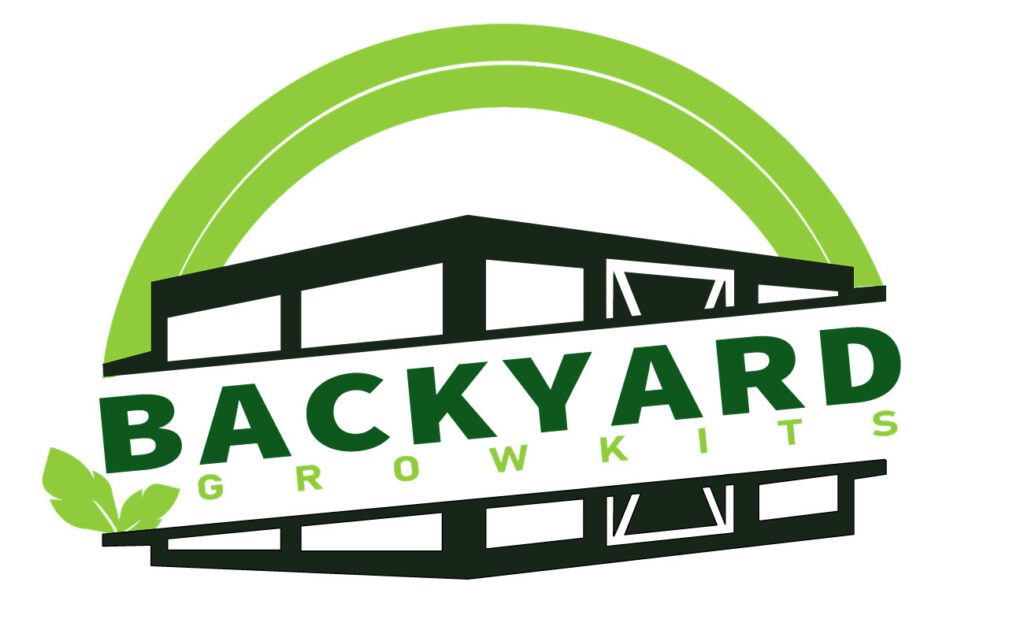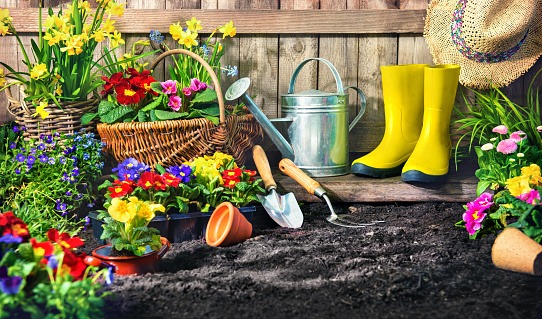Gardening gives an unforgettable and magical experience if practiced with the right motives and gardening tools.
Gardeners choose gardening tools based on the type and scale of gardening one intends to carry out but most importantly, the quality of the gardening tools is essential.
Purchasing the right gardening tools that are high quality will save you from tons of frustration and depression over gardening work.
As you purchase gardening tools, make it a point to acquire tools made of metal and wood as these always stand out to be more durable and stronger than plastic materials.
At this point, we shall take you through the different gardening tools that make your backyard grow to experience a breeze.
Watering gardening tools
Plants need water, especially during dry weather. The tools to help you do the plant watering activity include buckets, irrigation kits, watering can, and spray bottles.
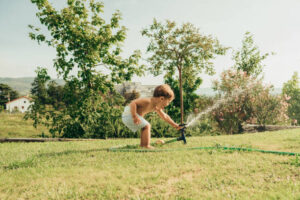
Buckets.
Why did I begin with buckets? Buckets are an essential and multi-purpose gardening tool. They carry out a significant number of activities.
Buckets store water for watering our crops in times of dry weather, store potting soil, mix fertilizers, and carry tools to the garden. The list is endless.
Irrigation kit.
An irrigation kit comes in handy when carrying gardening on a large scale, and here it comes the time consuming to use a watering can.
An irrigation kit saves a lot of time because it can water all the plants simultaneously.
Watering can.
A watering can is only economical for small gardens for watering crops, storing water, and carrying liquid fertilizers.
Spray bottles.
During the germination of your seedlings, gardeners use the spray bottles to mist and spray aphids to eradicate their ugly activities.
Gardening attire.
Gardeners need personal protective garments to protect their bodies from harm to carry out gardening safely.
a memorable and fun experience gardening starts with wearing personal protective equipment to minimize accidents that cause panic
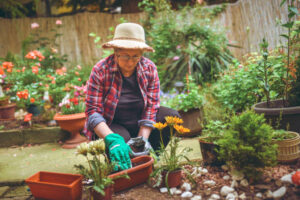
A gardening hat.
Keep the scorching sun off your head, neck, and ears by wearing a widespread flap hut on your head. Ensure that you get the right comfortable and fitting size for yourself.
Insect repellent.
A garden happens to be habitant to many insects that can ruin your gardening life experience, so why not repel these insects?
Before heading for your gardening work, smear an insect repellent that is quite okay with your skin complexion to keep away these biting insects.
Gardening gloves.
We all love protecting cuticles. So yes, you need to protect your delicate hands and nails from soils in the garden by wearing gardening gloves when tending to your garden.
There are various gardening gloves; always purchase a suitable type for yourself.
Garden boots.
Garden boots come in various colors; some are black, blue, pink, purple, and red. So add some color to your surrounding to enlighten the mood depending on the colors you like.
Garden shoes can work for you also in place of garden boots.
Just like the way you need gloves to protect cuticles, you also need garden boots to keep your feet and toenails from soils, sharp instruments, and dangerous snakes.
Tool apron.
As you do your gardening, you are most likely to have encounters with small handy gardening tools, and many times it is easy to forget these tools in your garden.
Therefore, you need a tool apron to accommodate your small handy tools since it is common to forget these tools in the garden on a busy daily schedule.
Kneeler.
Potting, weeding, and other garden activities require working close to the ground. A kneeler avails a cushioned site for the knees; therefore, you don’t have to strain the entire body.
Knee pads.
Often, gardening work gets cozy, and you may end up going on your knees to garden effectively, get knee pads to protect your knees from soils and sharp, dangerous objects.
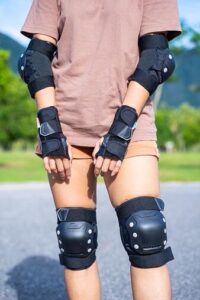
Cutting tools.
We apply cutting tools for pruning, digging and on rare occasions, we use them for harvesting ready plants.

Pruning scissors.
Pruning scissors are, of course, used during the pruning process—scissors help in cutting long plant branches, trimming plants, cutting strings, and opening bags.
Loppers.
Gardeners improvise loppers in place of pruners when cutting big plants that pruning scissors can’t handle.
Fruit grabber.
Use a fruit grabber to harvest your ripe fruits. Using a fruit grabber to get ripe fruits is better than shooting using a stone because stones often bruise the fruits.
Planting tools.
These are tools used to grow plants or provide an excellent environment for the growth of the plants.
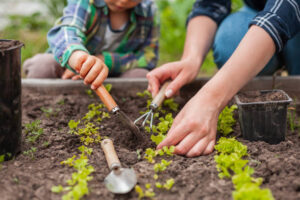
Trowel
When it comes to transplanting seedlings to the central garden, uprooting weeds, and scooping soil, a trowel makes these activities more enjoyable.
With a bit of effort, use a trowel to carry out all these activities and always scoop soil carefully without destroying the roots.
Heating mat.
Some seeds require a lot of warmth to germinate; a heating mat provides enough warmth to the germination seeds, therefore, quickening the seed germination process.
Grow lights.
If you practice gardening in an area with insufficient light, you require to grow lights to help our plants flower. Light is an essential element necessary for the flowering of plants.
Fan.
Make your seedlings strong and sturdy by using a fan to blow up, facilitate air movement, prevent bacterial and damping-off disease.
Cultivating garden tools
To prepare or work on the different soils, you need cultivating tools to efficiently carry out the garden activities.

Broad fork.
With a finger-like structure, a broad fork can loosen the soil without mixing the soil layers, but the only disadvantage is that it interrupts the soil conditions to a small extent.
Digging fork.
Often we meet hard soil, and gardeners need a suitable tool for breaking up these hard soil layers, and a digging fork gets the work done.
Garden rakes.
We have two types of garden rakes; the lightweight rake and the heavy-duty tine bow rakes.
The lightweight rake collects dried leaves, grass clippings, and debris, while the heavy-duty tine bow rake carries out more complex activities like smoothing and leveling garden beds.
Hoe.
It is one of the gardening tools that can perform multiple gardening tasks. It is used for weeding, cultivating, and preparing seedbeds.
Cultivator
Due to its long length, it can access shrubs, hence performing multiple tasks like turning soil, mixing fertilizers, and removing enormous weeds.
Tiller.
It is the perfect gardening tool for mixing amendments; endeavor to acquire the right and comfortable size for yourself.
String.
Strings help in the proper and straight arrangement of seeds and young trees in a straight row, and they help a lot when it comes to holding plants in one place.
Transporting tools
We carry out hauling activities using transporting tools or equipment.

Wheelbarrow.
A wheelbarrow is a common gardening tool; you can rarely identify a garden without a wheelbarrow.
A wheelbarrow is essential for hauling purposes for hauling seeds, fertilizers, tools, and trays of seedlings.
Trug
When you get your produce from the garden, it can have soils that you need to wash off before transferring them to the house.
So a trug is used for rinsing the produce and carrying it safely to the house.
Storage tools.
Gardening involves a lot of storage activities; we store plants, garden tools, ready produce, and garden wastes that decompose into manure.
Tools tower.
Some gardening tools are long and can’t be accommodated in an apron or bucket, so a tools tower accommodates all these long gardening tools in one place.
Composters.
Composters are available in various categories, for example, Bokashi and worm composters. Composters help with damping garden waste.
It is possible to turn garden waste into gold manure using composters, these allow the breakdown of garden waste into inorganic compounds, and the latter is manure.
Trellis.

Trellis keeps plants off the ground hence obtaining healthier plants, reducing bug activities, and straighter cukes.
Testing tools.
These are the garden tools for checking out the soil conditions like soil structure, soil texture, soil aeration, and soil drainage.

PH tester.
Before commencing our gardening works, it is vital to find out the acidity and alkalinity of the soils.
We use a PH tester to measure the PH levels of the soils. Discover the acidity or alkalinity of your soil using a PH tester.
Final check-in about Gardening tools for your Backyard
Keep in mind that all these gardening tools require extra care and maintenance to have an extended lifespan
Always clean your gardening tools after use, service them regularly and repair them before utilizing them for the next time.
Store gardening tools in a clean, dry place and always disinfect the tools using a bleaching solution after working on disease-infested plants.
